Why are wine bottles tall and narrow? That distinctive shape contributes to the happy marriage between cork and a bottle made tall enough to lie on its side so the wine can “breathe” through the cork as it matures. Lying on its side while stored in cool, dry cellars ensures that the liquid within the bottle will marinate the cork end just enough to keep it from drying out and crumbling.
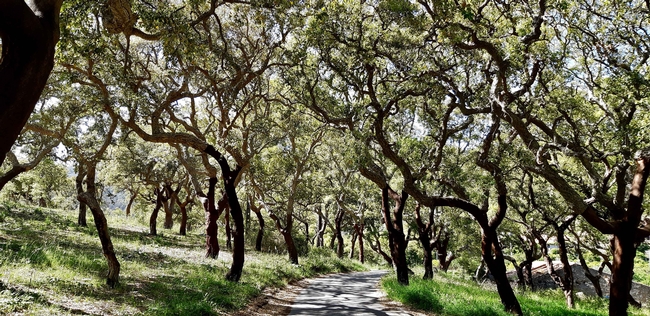
What do wine, wax, and wrinkles have to do with local trees? In 1904, a cork oak grove was planted in Lower Bidwell Park near the Nature Center on East 8th Street. The grove was located within a 29-acre tract of land that John Bidwell donated in 1888 to the newly created State Board of Forestry for use as a woody plant nursery and demonstration plantation.
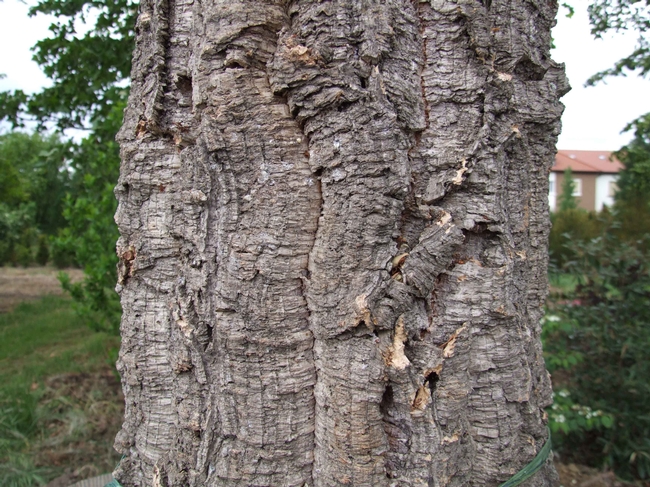
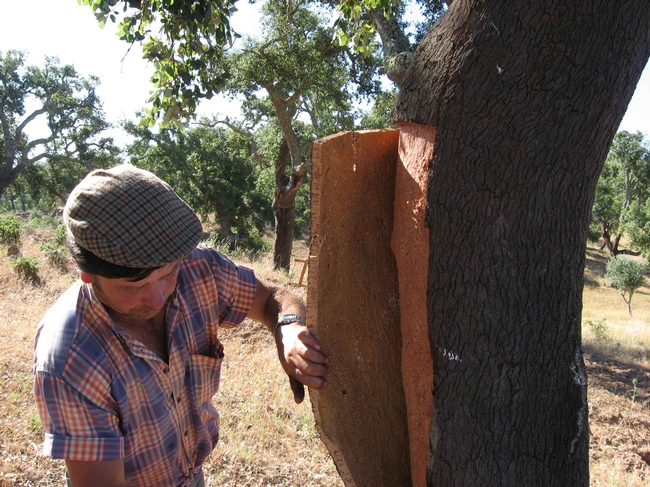
The species can reach about 66 feet in height, but is usually smaller than that in its native habitat. There are two notable exceptions: In Portugal, the Sobreiro Monumental (Monumental Cork Oak), is 234 years old and 52 feet tall, with a trunk so large in circumference that it takes up to five people with outstretched arms to encircle it. It is listed as a National Monument, and cited in the Guinness Book of Records as the largest and oldest cork oak in the world. Closer to home, a Quercus suber in Napa is registered as a California Big Tree. It is 89 feet tall, with a trunk circumference of 20 feet, and a crown spread of 81 feet.
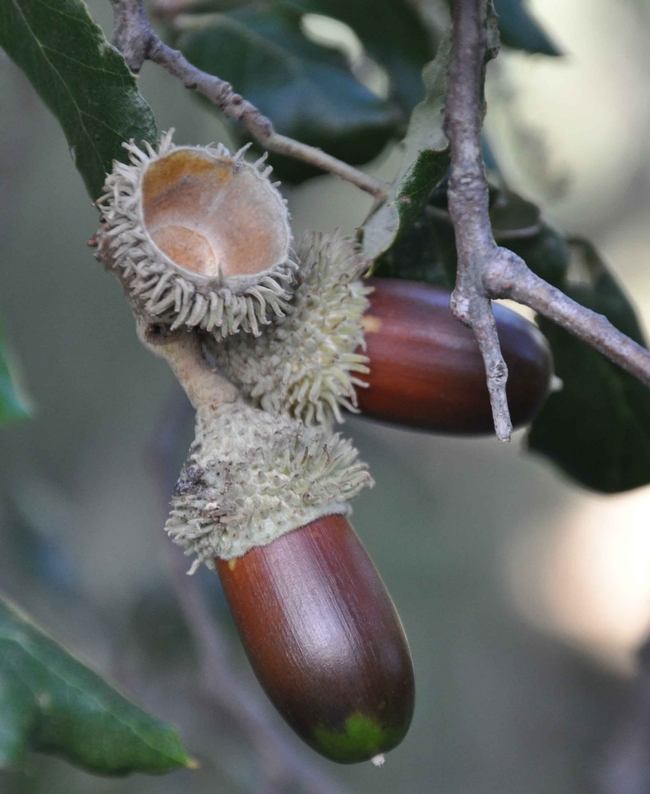
What makes the cork bark commercially viable is its unique cell structure and its ability to regenerate. A cubic centimeter of cork bark is teeming with air cells (up to 40 million!) and those cells are waterproofed by the waxy suberin. Cork oak bark is durable, light, and bouncy, and once cut, has a suction-cup effect that helps it adhere to the neck of a bottle. There is a long list of uses for cork that's left over after the stoppers have been cut out: flooring, cricket ball cores, insulation panels, sound-proofing materials, fishing rod handles, even devices for the space industry. In Portuguese towns and cities, it is common to see shops selling backpacks, handbags, and even shoes made out of cork.
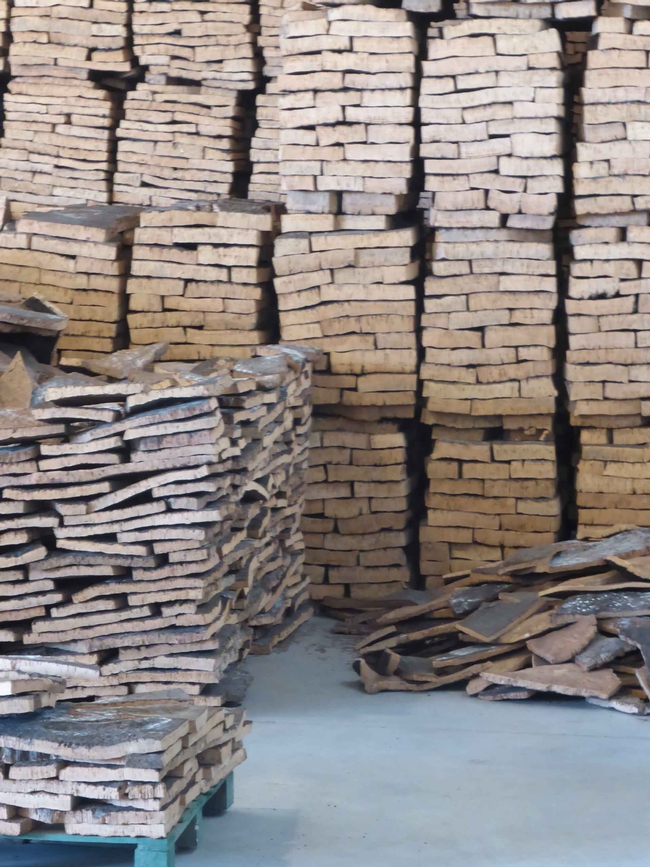
In the harvesting process, the bark is peeled from the tree by hand, using only an axe to strip the bark from around the tree. Absolutely no machinery is employed. It can take up to five people to harvest the bark of each tree. Because expertise and finesse is required to peel off the bark without damaging the trunk's cambium layer, harvesters train for about 8 years.
Our cork oaks in Lower Bidwell Park were also harvested periodically; scars from a stripping performed in 1940 and again more recently are visible even now. Click here for a photo taken in 1941 of the local cork oak trees.
In addition to providing cork bark, cork oak groves in Portugal and Spain support another form of agriculture: their acorns provide sustenance to sheep, cattle, and especially hogs. A superior type of ham with a distinctive sought-after flavor is obtained from the Iberian pigs that feed on the fallen acorns.
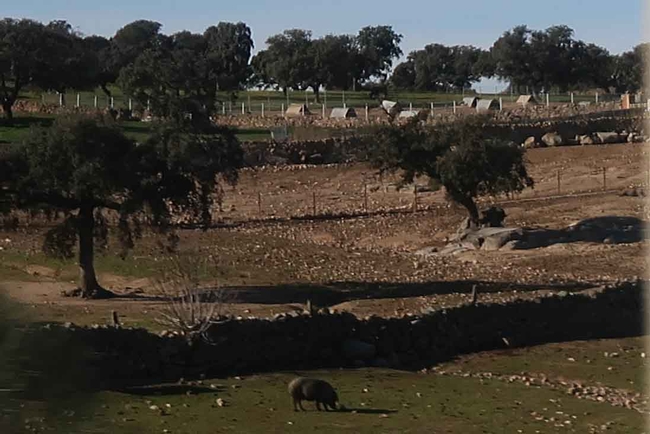
The Butte County UC Master Gardeners are part of the University of California Cooperative Extension (UCCE) system, serving our community in a variety of ways, including 4H, farm advisors, and nutrition and physical activity programs. Our mission is to enhance local quality of life by bringing practical, scientifically-based knowledge directly to our community. For more information on UCCE Butte County Master Gardeners and their upcoming events, and for help with gardening in our area, visit https://ucanr.edu/sites/bcmg/. If you have a gardening question or problem, call our Hotline at (530) 538-7201 or email mgbutte@ucanr.edu.
Photo Credits:
Cork oak acorns - Bellotas de alcornoque (Quercus suber), Ceuta, España. Xemenendura - Own work, CC BY-SA 3.0, https://commons.wikimedia.org/w/index.php?curid=29528312
Cork oak stripping - Nederlands: Kurkschillen in Santa Margarida da Serra. By Nocampo - Own work, CC BY-SA 3.0, https://commons.wikimedia.org/w/index.php?curid=23045407
Trunk of a Cork oak - Stamm einer Korkeiche (Quercus suber). By Claus Ableiter - Own work, CC BY-SA 3.0, https://commons.wikimedia.org/w/index.php?curid=2170249
Cork Oaks Southern Portugal. By KirjavaKinkytail - Own work, CC BY-SA 4.0, https://commons.wikimedia.org/w/index.php?curid=79311214